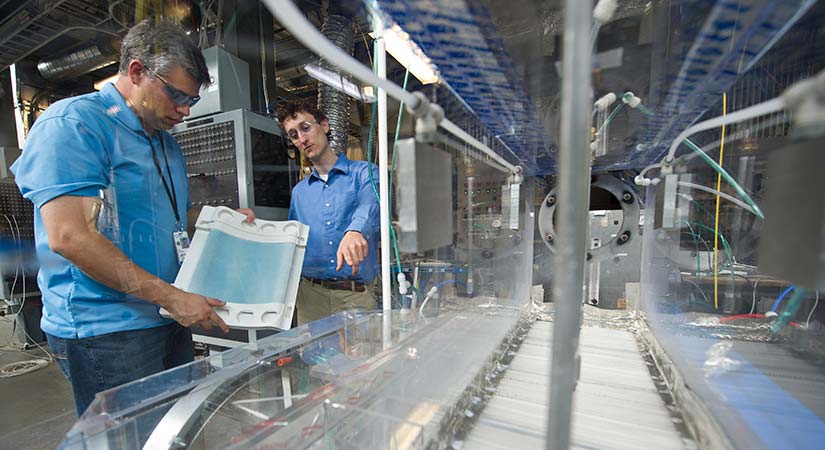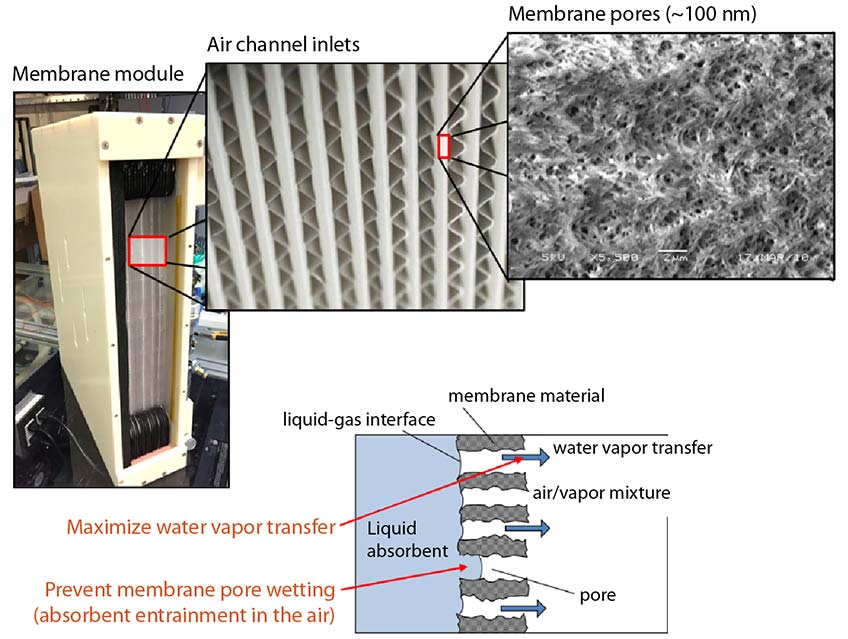High-Performance Computing and Advanced Air-Conditioning Technology
Using molecular dynamics simulations, NLR helped improve a company's energy-efficient solution for building applications.

NLR's state-of-the-art facilities, like the Advanced HVAC Systems Laboratory pictured here, are used to help industry commercialize advanced air-conditioning technologies. Photo by Dennis Schroeder, National Laboratory of the Rockies
Air conditioning accounts for 15% of U.S. building energy consumption. These air conditioners need to remove both sensible energy (temperature control) and latent energy (humidity control). In recent decades, the sensible load has been reduced due to improved insulation, windows, and equipment (e.g., LED lighting). However, the latent load—due to occupants, ventilation, and moisture-generating equipment—has remained about the same. This requires improved humidity-control options for air conditioning.
7AC Technologies is developing liquid-to-air membrane contractors that offer an efficient humidity control addition to standard air conditioners. This technology uses membranes to separate the air and a hygroscopic liquid absorbent, and this project used molecular dynamic simulations to investigate the detailed heat/mass transfer processes occurring at the membrane/air/absorbent interface.
The project determined the effect of membrane morphology on breakthrough pressure of the absorbent into the pores and evaporation and condensation rates from the liquid/air interface. This helps 7AC Technologies with the selection and design of its membrane.

This research focused on understanding membrane pore wetting, evaporation and condensation, and heat and mass transport near the liquid/air interface. Illustration by Jason Woods, National Laboratory of the Rockies
Impact
Given that 7AC Technologies' technology is highly efficient, resulting in 40%–50% energy savings for commercial buildings, this work may:
- Reduce costs for building owners and tenants
- Enhance building-user performance and comfort
- Limit greenhouse gas emissions and other pollutants.
NREL's work will help in the commercialization and deployment of the technology.
Capabilities
Learn more about NLR's high-performance computing facilities.
Publications
Modeling Water Vapor Transport at Liquid/Membrane Interfaces for Applications in Liquid Desiccant Air Conditioners, NLR Technical Report (2020)
Developing High-Performance Computing Model of Vapor Transition Through Advanced Membranes for Applications in 7AC Liquid Desiccant Air Conditioners, NLR Poster (2019)
Partners
NLR partnered with 7AC Technologies, a Massachusetts-based company offering new approaches to air conditioning technology, to deliver energy savings and maximize climate friendly refrigerants as part of a cooperative research and development agreement.
Contact
Share
Last Updated Dec. 4, 2025
